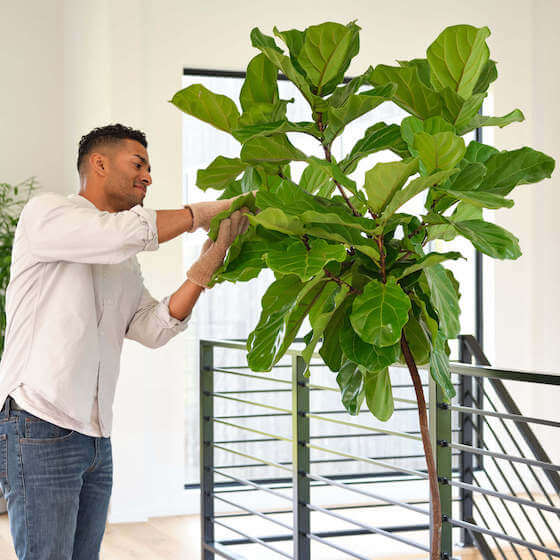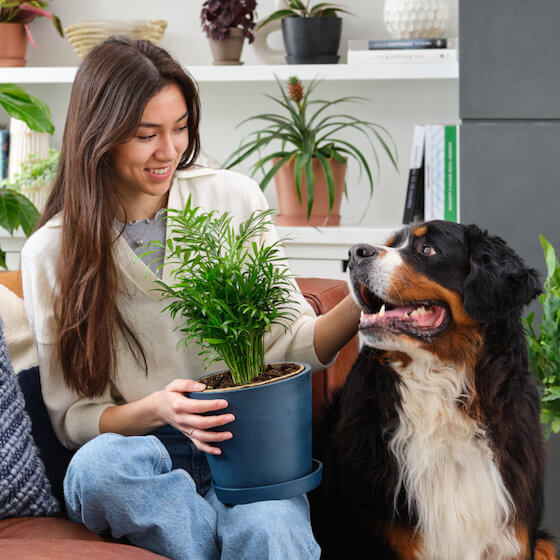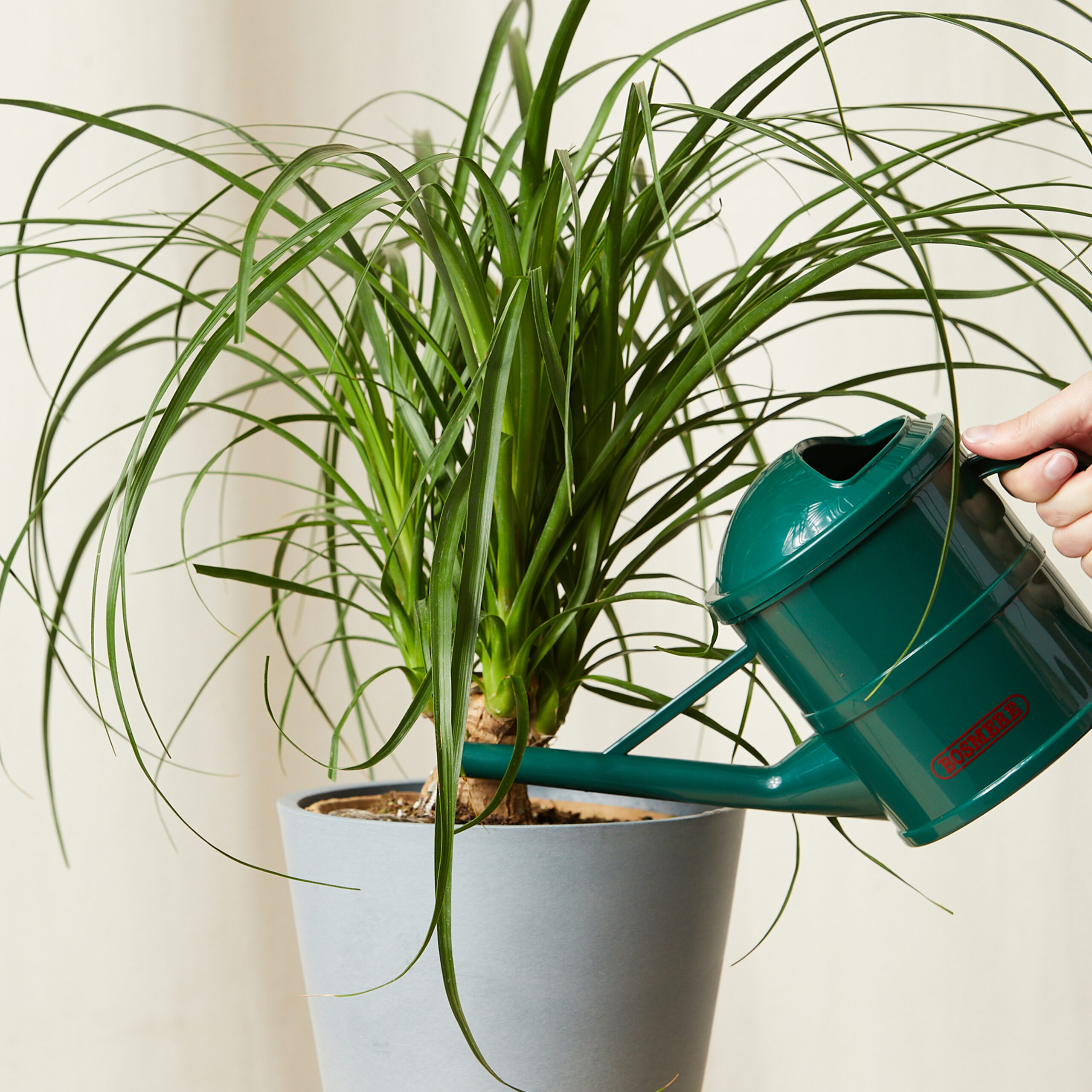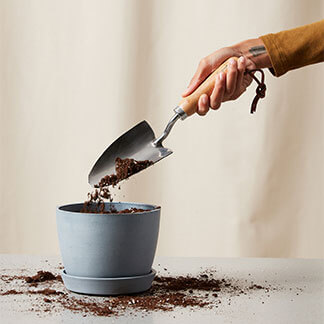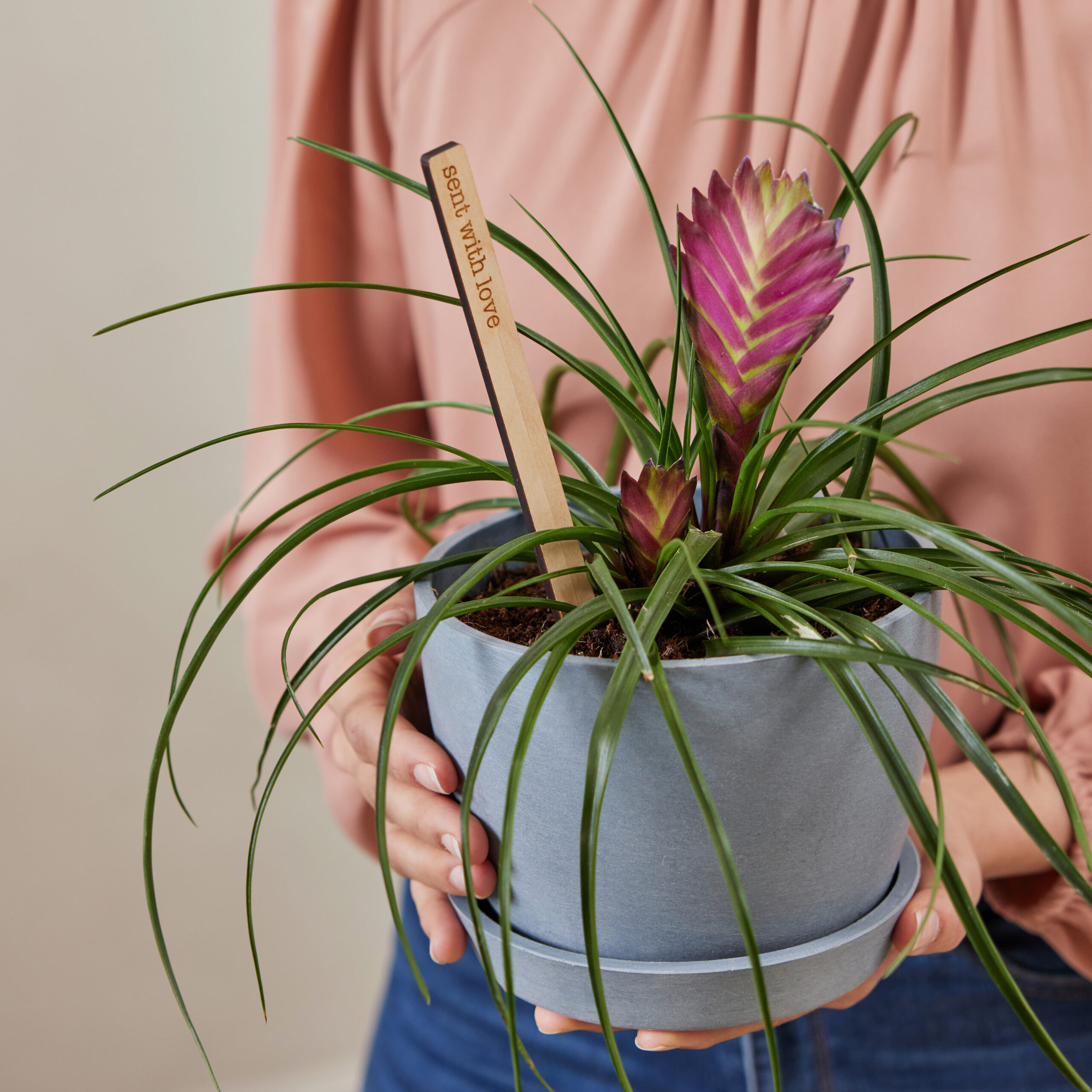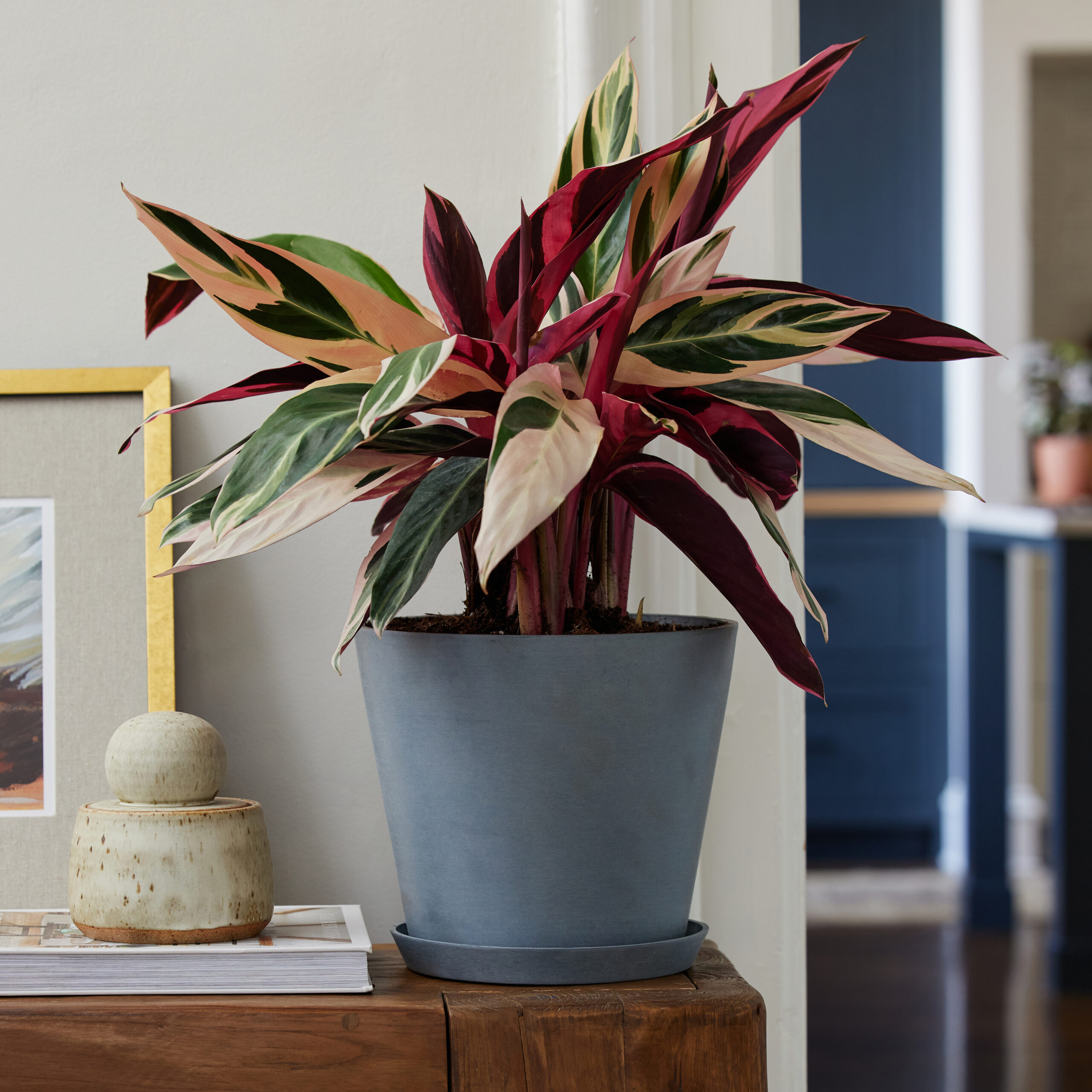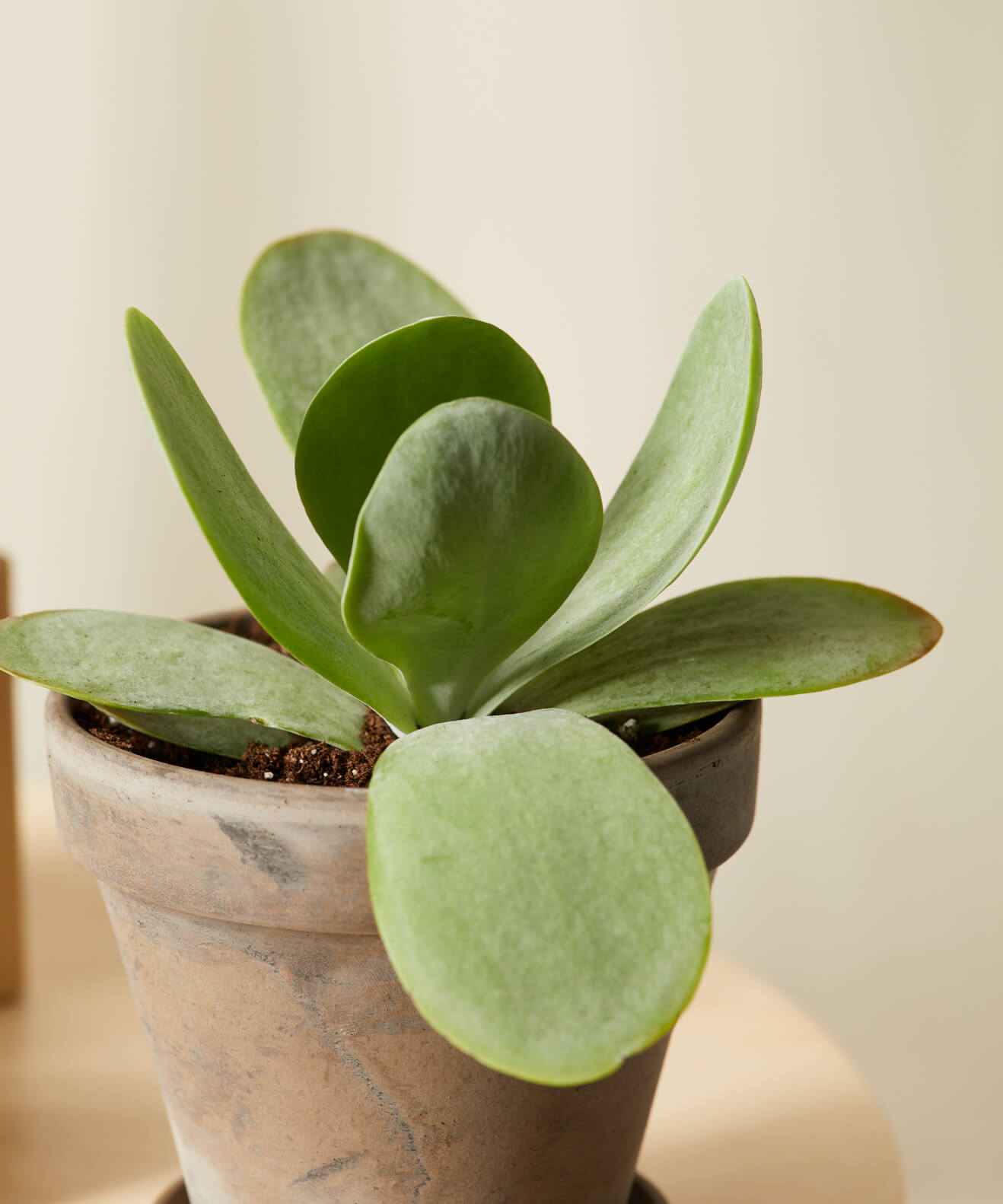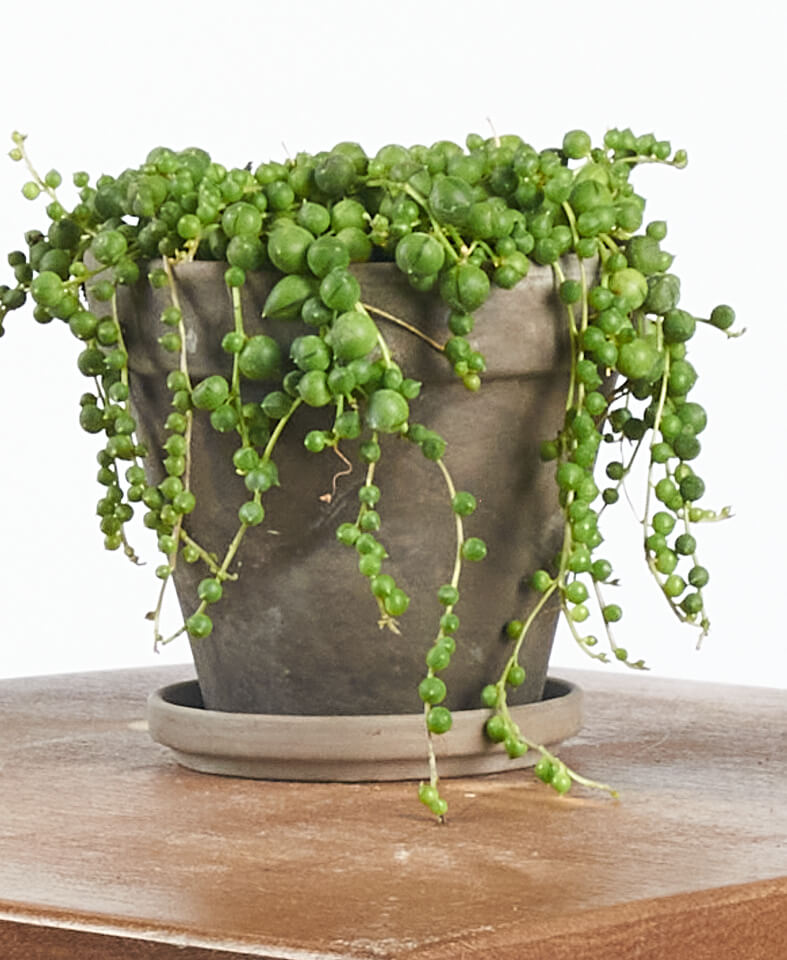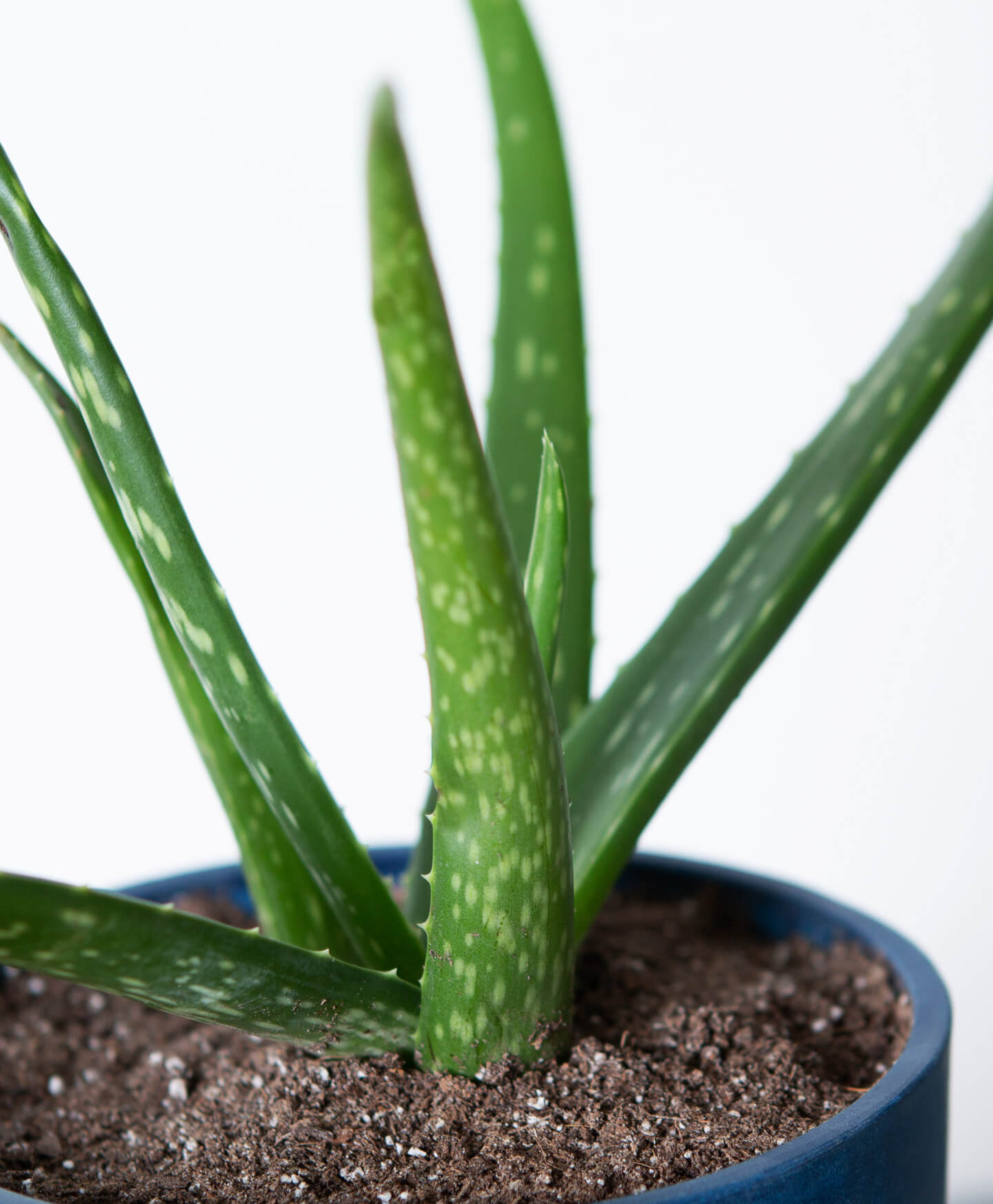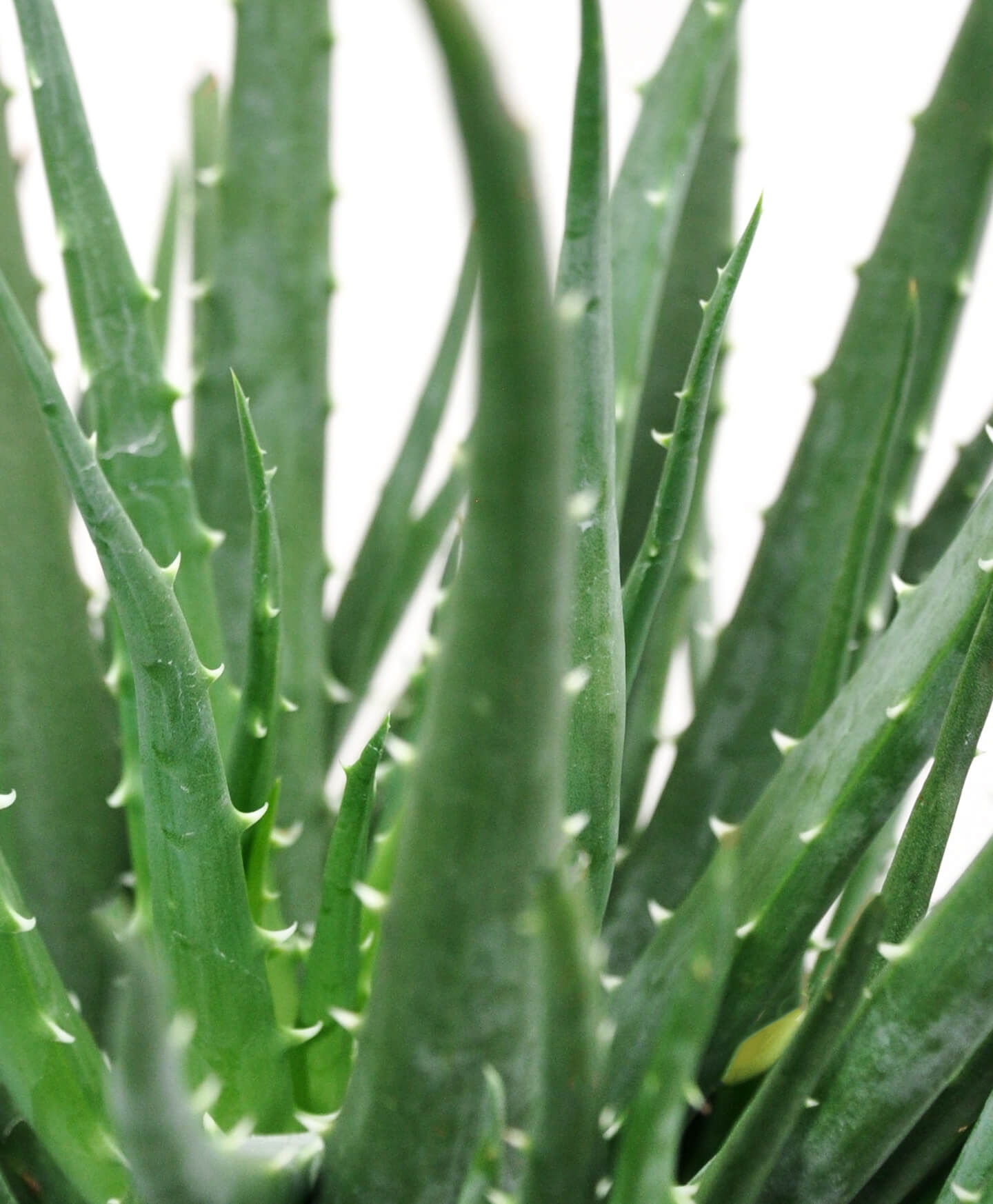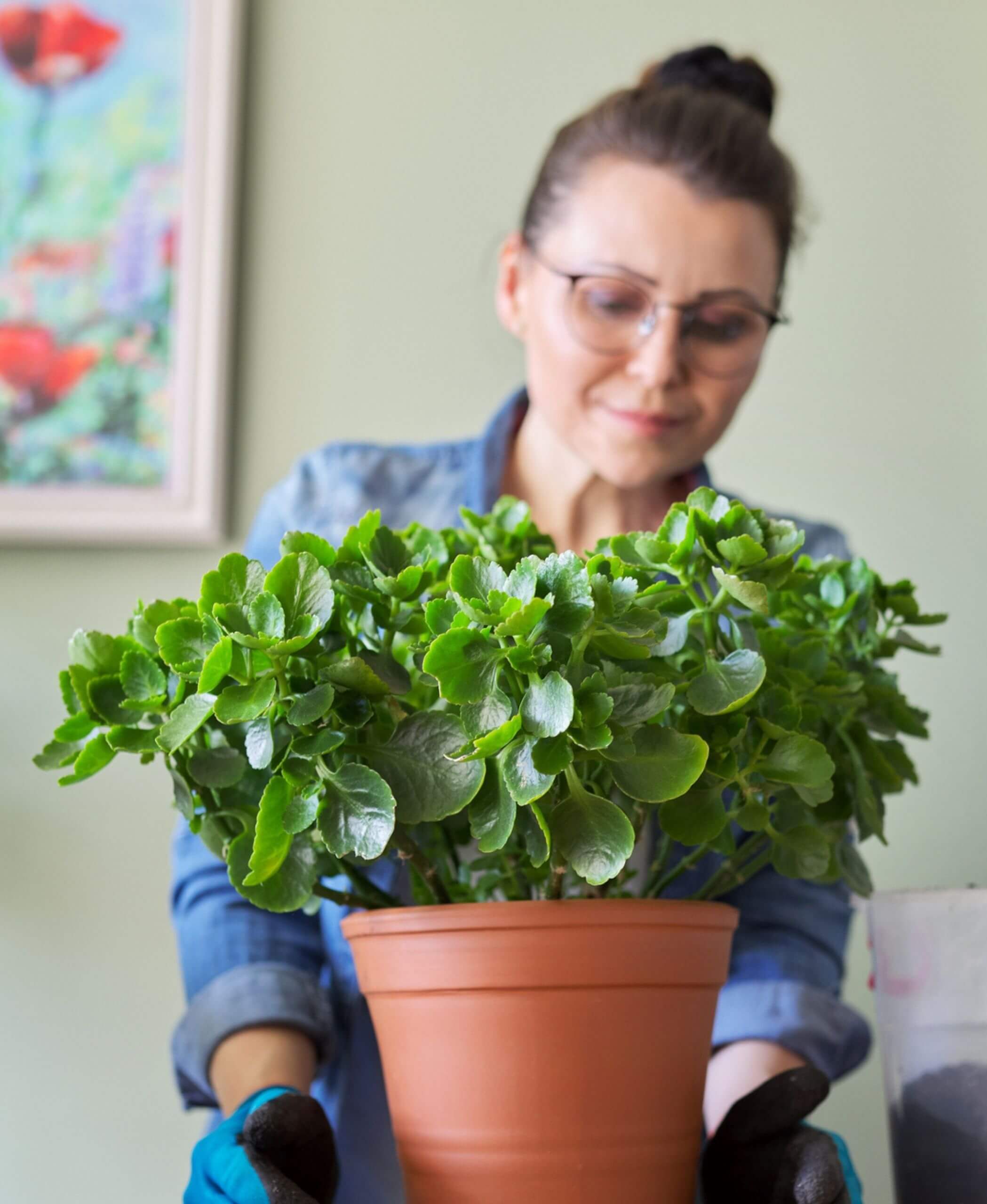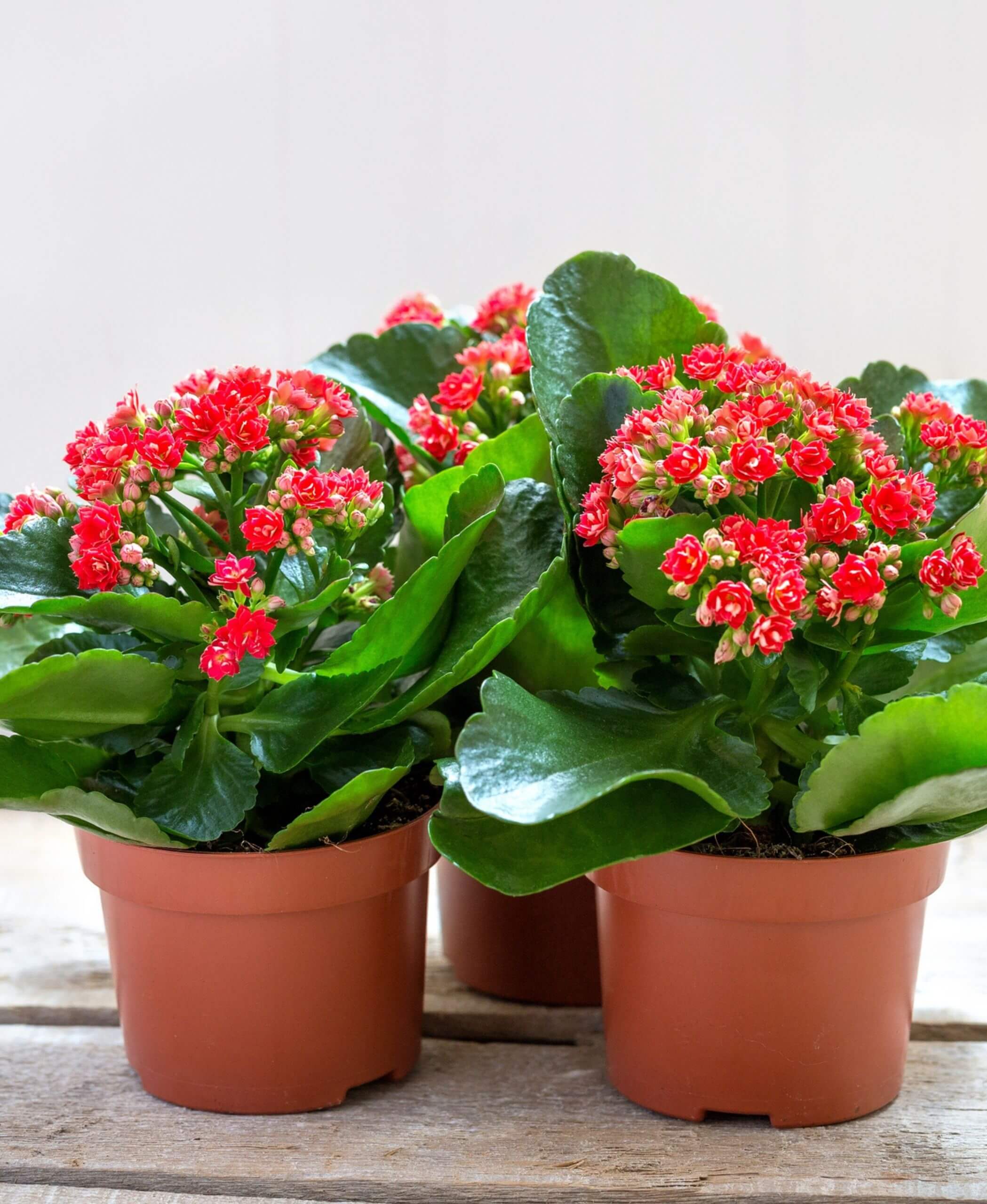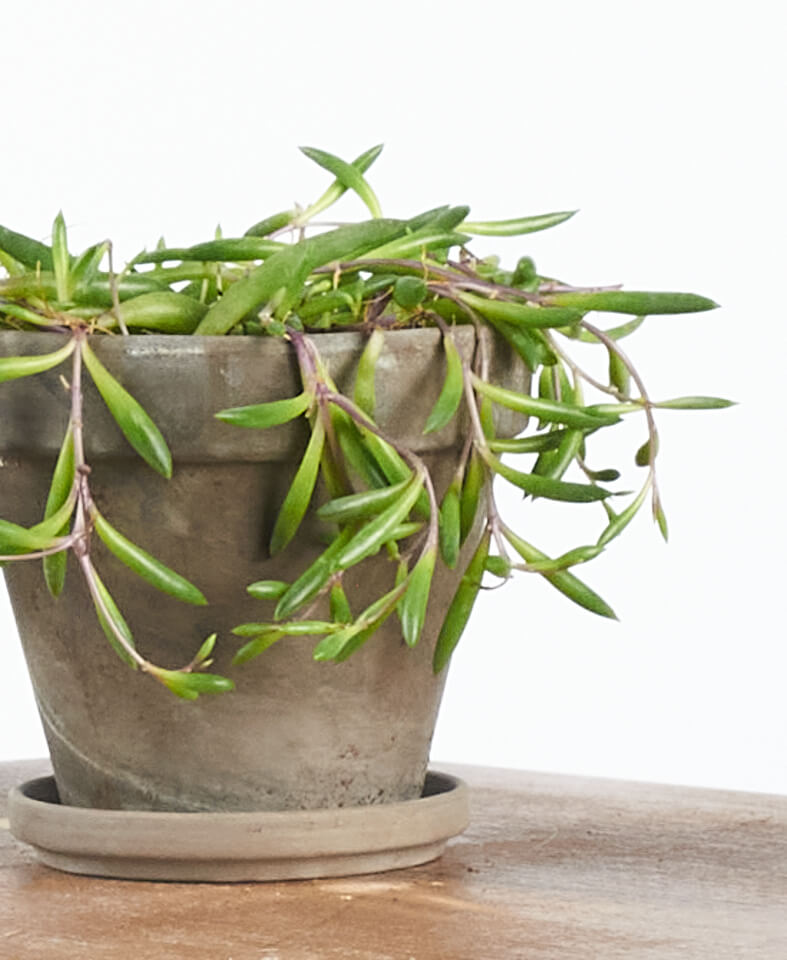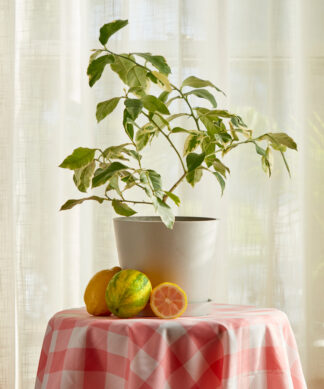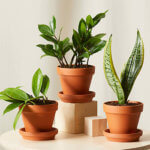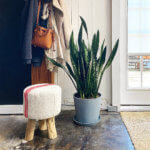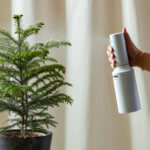How to care for your Succulent
Use these instructions to care for a Succulent. This guide will tell you how to water a Succulent; its light, temperature, humidity preferences and any additional care it might need to help it grow.
Agave Geminiflora
Your Agave Geminiflora needs bright direct light for 6-8 hours a day. You can find this in an unobstructed southern or western window.
Water only when 100% of the soil volume is dry. This succulent-like plant does not tolerate soggy soil. Always water thoroughly and discard any excess water in the saucer.
Your Agave Geminiflora does fine in household humidity and prefers drier air.
Your Agave Geminiflora prefers temperatures between 65-85°F.
Feed once in the summer with a cactus/succulent fertilizer at half strength. Always fertilize on damp soil. No fertilizer is needed in the fall and winter.
This plant is considered toxic to humans and pets if ingested.
You’ll notice your agave has fibrous, silvery hairs that curl back along the leaf margins. This is normal and no cause for concern. You can leave them as-is or prune them with sharp snips.
Aloe Jucunda
Your Aloe plant prefers bright indirect light to full sun. Insufficient light will cause the leaves to droop downwards. If you don’t have a location with ideal lighting for your plant, use a Grow Light!
Water your Aloe when the soil volume is 100% dry. Water thoroughly until it flows out of the drainage hole. Discard excess water to discourage root rot.
This plant does not require any extra humidity and can handle dry air.
Your Aloe will appreciate temperatures between 65-75°F.
Feed once in the spring and once in the summer with a liquid fertilizer for cacti and succulents.
This plant is toxic to pets and humans if ingested.
If you place your plant in the full sun during the late spring and summer, it will most likely reward you with pink blooms. When placed outdoors, it will require a bit more water. Look out for wilting leaves—this is a result of inadequate water. Your Aloe plant is sensitive to overwatering. Soft, mushy, or brown leaves indicate your plant may be suffering from root rot.
Aloe Pepe
Your Aloe plant prefers bright indirect light to full sun. Insufficient light will cause the leaves to droop downwards. If you don’t have a location with ideal lighting for your plant, use a Grow Light!
Water your Aloe when the soil volume is 100% dry. Water thoroughly until it flows out of the drainage hole. Discard excess water to discourage root rot.
This plant does not require any extra humidity and can handle dry air.
Your Aloe will appreciate temperatures between 65-75°F.
Feed once in the spring and once in the summer with a liquid fertilizer for cacti and succulents.
This plant is toxic to pets and humans if ingested.
If you place your plant in the full sun during the late spring and summer, it will most likely reward you with pink blooms. When placed outdoors, it will require a bit more water. Look out for wilting leaves—this is a result of inadequate water. Your Aloe plant is sensitive to overwatering. Soft, mushy, or brown leaves indicate your plant may be suffering from root rot.
Crassula Calico Kitten
Place your Calico Kitten in direct or bright indirect light. It will not thrive if it does not receive enough sunlight.
Your Calico Kitten does not need to be watered as frequently as most indoor plants. Water only when the soil is completely dry, or when you notice the leaves starting to shrivel. Water thoroughly so the roots have a chance to soak up the moisture. Make sure there is no standing water left in the saucer, as this can lead to root rot.
Your Calico Kitten does not require any extra humidity and enjoys dry air.
Your Calico Kitten will do just fine in average room temperatures between 60–80 degrees.
Feed once every month during the spring and summer with a liquid fertilizer for succulents.
No known toxic effects have been reported.
Your plant will become pinker when grown in direct sunlight. When grown in indirect light, it will be greener and less pink.
Crassula Cephalophora
Your Crassula prefers bright light and full sun.
Water your Succulent only when the soil is completely dry. Water until liquid flows through the drainage hole at the bottom of the pot and discard any water that has accumulated in the saucer.
Your Succulent prefers a dry environment. No need to mist.
Your Crassula Cephalophora will do just fine in average room temperatures between 60-80 degrees.
Fertilize once in the spring and once in the summer with a succulent fertilizer.
Your Crassula Cephalophora is considered to be toxic to pets and humans. Ingestion may cause mouth and stomach irritation.
Over time, your Crassula will shed its lower leaves. Though this can be alarming, it is completely natural and does not mean your plant is dying.
Echeveria Filiferum
Place your Echeveria bright light to full sun. It will not thrive if it does not receive enough sunlight.
Water your Succulent only when the soil is completely dry. Water until liquid flows through the drainage hole at the bottom of the pot and discard any water that has accumulated in the saucer.
Your Succulent prefers a dry environment. No need to mist.
Your Echeveria will do just fine in average room temperatures between 60-80 degrees.
Fertilize once in the spring and once in the summer with a succulent fertilizer.
Your Echeveria is non-toxic according to the ASPCA.
Over time, your succulent will shed the lower leaves. Though this can be alarming, it is completely natural and does not mean your plant is dying.
Echeveria Rosea
Place your Echeveria Rosea in bright indirect or direct light. It will not thrive if placed in low light.
Water your Echeveria Rosea when the soil is 100% dry.
Your Echeveria Rosea does great in average room humidity.
Your Echeveria Rosea prefers temperatures between 60-90°F.
Feed your Echeveria Rosea once per season in spring and summer with an all-purpose fertilizer.
Echeveria are considered to be non-toxic.
Over time, your Echeveria will shed its lower leaves. Though this can be alarming, it is completely natural and does not mean your plant is dying.
Flowering Kalanchoe
Your plant will need plenty of bright light to bloom. It will do best by a sunny south or west window.
Allow the Flowering Kalanchoe’s soil to become 100% dry between waterings. Be careful not to overwater as their roots are prone to root rot. Water slowly, allowing it to soak into the soil, until liquid flows through the drainage hole at the bottom of the pot. Discard any water that has accumulated in the saucer.
Flowering Kalanchoe plants do not need high humidity to thrive. These plants will do well in average household humidity.
Your plant will thrive in rooms with temperatures between 55-80°F.
Feed your plant with a well-balanced fertilizer about once per month during the spring and summer months.
Flowering Kalanchoe plants are considered to be toxic to pets.
To help the Flowering Kalanchoe rebloom, place it in complete darkness at night for 12-14 hours (closets work best) and then bright light for 10-12 hours. Also, pinch back or cut dead flowers to encourage more blooms.
Gasteria Liliputana
Your Gasteria prefers bright light to full sun. It will not thrive if it does not receive enough sunlight.
Your Gasteria does not need to be watered as frequently as most indoor plants. Water only when the soil is completely dry, or when you notice the leaves starting to shrivel. Water thoroughly so the roots have a chance to soak up the moisture. Make sure there is no standing water left in the saucer, as this can lead to root rot.
Your Gasteria will do just fine in average room temperatures between 60-80 degrees.
Your Gasteria will do just fine in average room temperatures between 60-80 degrees.
We suggest fertilizing once in the spring and once in the summer with a succulent fertilizer.
Your Liliputana is non-toxic according to the ASPCA.
Over time, your succulent will shed its lower leaves. Though this can be alarming, it is completely natural and does not mean your plant is dying.
Haworthia
Your Haworthia Plant prefers bright light and full sun.
Your Haworthia does not need to be watered as frequently as most indoor plants. Water only when the soil is completely dry, or when you notice the leaves starting to shrivel. When you do water, water thoroughly so the roots have a chance to soak up the moisture. Make sure there is no standing water left in the saucer, as this can lead to root rot.
Your Succulent will do just fine in average room temperatures between 60-80 degrees.
This plant does not require any extra humidity and enjoys the dry air.
We suggest fertilizing once in the spring and once in the summer with a succulent fertilizer.
Your Haworthia Plant can be moderately toxic, causing mouth irritation and stomach indigestion to humans and pets if ingested.
Over time, your succulent will shed its lower leaves. Though this can be alarming, it is completely natural and does not mean your plant is dying.
Jade Plant
Give your Jade plant indirect to bright light. Too little light can cause overwatering and slow growth.
Your Jade Plant does not need to be watered as frequently as most indoor plants. Water only when the soil is completely dry. Water thoroughly until you see water flow out of the drainage hole. Make sure there is no standing water left in the saucer, as this can lead to root rot.
This plant does not require any extra humidity and enjoys dry air.
Your Jade Plant will do just fine in average room temperatures between 60-80°F.
Fertilize once in the spring and once in the summer with a succulent fertilizer.
Your Jade Plant is considered to be toxic.
Over time, your Jade will shed its lower leaves. Though this can be alarming, it is completely natural and does not mean your plant is dying.
Kalanchoe Flapjack
Place your Kalanchoe in bright light or full sun. It will not thrive if it does not receive enough sunlight.
Your Kalanchoe Flapjack does not need to be watered as frequently as most indoor plants. Water only when the soil is completely dry, or when you notice the leaves starting to shrivel. Water thoroughly so the roots have a chance to soak up the moisture. Make sure there is no standing water left in the saucer, as this can lead to root rot.
Your Succulent prefers a dry environment. No need to mist.
Your Kalanchoe Flapjack will do just fine in average room temperatures between 60-80 degrees.
We suggest fertilizing once in the spring and once in the summer with a succulent fertilizer.
Your Kalanchoe Flapjack is considered to be toxic to pets.
Over time, your succulent will shed its lower leaves. Though this can be alarming, it is completely natural and does not mean your plant is dying.
Lace Aloe
Your Lace Aloe needs bright direct light. This means a spot that gets 6 plus hours of direct sun per day. If you don’t have a location with ideal lighting for your plant, use a Grow Light!
Water your Lace Aloe when the soil volume is 100% dry. Water thoroughly until it flows out of the drainage hole. Discard excess water to discourage root rot.
This plant does not require any extra humidity and can handle dry air.
Your Aloe will appreciate temperatures between 60-90°F.
Fertilize once per season with a cactus or succulent fertilizer.
This plant is toxic to humans and pets if ingested.
If physically damaged this plant will ooze a white milky sap. This is normal but can cause skin irritations if it makes skin contact. Be sure to wear gloves when handling.
Life Saver Cactus
Your Life Saver Cactus needs bright direct light. This means a spot that gets 6 plus hours of direct sun per day.
Water your Life Saver Cactus when the volume of soil is 100% dry. Water thoroughly until it flows out of the drainage hole. Discard excess water to discourage root rot.
This plant does well in dry to average household humidity.
Prefers temperatures between 60-90°F.
Fertilize once per season with a cactus or succulent fertilizer.
Toxic to humans and pets if ingested.
If physically damaged this plant will ooze a white milky sap. This is normal but can cause skin irritations if they make skin contact. Be sure to wear gloves when handling.
Madagascar Palm
Your Madagascar Palm needs bright direct light for 6-8 hours a day. You can find this in an unobstructed southern or western window.
Water only when 100% of the soil volume is dry. This succulent-like plant does not tolerate soggy soil. Always water thoroughly and discard any excess water in the saucer.
Your Madagascar Palm does fine in household humidity and prefers drier air.
Your Madagascar Palm prefers temperatures between 65-85°F.
Feed once in the spring and once in the summer with a general-purpose fertilizer at half strength. Always fertilize on damp soil. No fertilizer is needed in the fall and winter.
This plant is considered toxic to humans and pets if ingested.
Take care to use gloves when repotting or handling Madagascar Palm as its spikes can cause pricks.
Money Maker
Your Money Maker prefers direct or bright indirect light.
Your Money Maker does not need to be watered as frequently as most indoor plants. Water only when the soil is completely dry, or when you notice the leaves starting to shrivel. Water thoroughly so the roots have a chance to soak up the moisture. Make sure there is no standing water left in the saucer, as this can lead to root rot.
This plant does not require any extra humidity and enjoys dry air.
Your Money Maker will do just fine in average room temperatures between 60–80 degrees.
Feed once every month during the spring and summer with a liquid fertilizer for succulents.
Your Money Maker is considered to be toxic.
Over time, your Money Maker will shed its lower leaves. Though this can be alarming, it is completely natural and does not mean your plant is dying.
Princess Pine
Your Princess Pine prefers bright light and full sun. It will not thrive if it does not receive enough sunlight.
Your Princess Pine does not need to be watered as frequently as most indoor plants. Water only when the soil is completely dry, or when you notice the leaves starting to shrivel. Water thoroughly so the roots have a chance to soak up the moisture. Make sure there is no standing water left in the saucer, as this can lead to root rot.
This plant does not require any extra humidity and enjoys dry air.
Your Princess Pine will do just fine in average room temperatures between 60–80 degrees.
We suggest fertilizing once in the spring and once in the summer with a succulent fertilizer.
Your Princess Pine is considered to be toxic to pets according to the ASPCA.
Feel free to trim your Princess Pine back if it gets too long or unruly. The best time to do this is during the spring or summer.
Purple Perle
Your Purple Perle prefers bright light and full sun. It will not thrive if it does not receive enough sunlight.
Your Purple Perle does not need to be watered as frequently as most indoor plants. Water only when the soil is completely dry, or when you notice the leaves starting to shrivel. Water thoroughly so the roots have a chance to soak up the moisture. Make sure there is no standing water left in the saucer, as this can lead to root rot.
This plant does not require any extra humidity and enjoys dry air.
Your Purple Perle will do just fine in average room temperatures between 60–80 degrees.
We suggest fertilizing once in the spring and once in the summer with a succulent fertilizer.
Your Purple Perle is non-toxic according to the ASPCA.
Over time, your Purple Perle will shed its lower leaves. Though this can be alarming, it is completely natural and does not mean your plant is dying.
Sedum Stonecrop
Your Succulent prefers bright light and full sun. It will not thrive if it does not receive enough sunlight.
Your Sedum Stonecrop does not need to be watered as frequently as most indoor plants. Water only when the soil is completely dry, or when you notice the leaves starting to shrivel. Water thoroughly so the roots have a chance to soak up the moisture. Make sure there is no standing water left in the saucer, as this can lead to root rot.
This plant does not require any extra humidity and enjoys dry air.
Your Sedum Stonecrop will do just fine in average room temperatures between 60–80 degrees.
We suggest fertilizing once in the spring and once in the summer with a succulent fertilizer.
Your Sedum Stonecrop is non-toxic according to the ASPCA.
Over time, your Sedum Stonecrop may shed its lower leaves. Though this can be alarming, it is completely natural and does not mean your plant is dying.
Silver Squill
Your silver squill will prefer indirect bright light. Too much light will scorch the leaves.
Water only when 100% of the soil volume is dry. This succulent-like plant does not tolerate soggy soil. Always water thoroughly and discard any excess water in the saucer.
Your silver squill does fine in household humidity.
Your silver squill prefers temperatures between 65-85°F.
Feed monthly during spring and summer with a general-purpose fertilizer at half strength. Always fertilize on damp soil. No fertilizer is needed in the fall and winter.
This plant is considered toxic to humans and pets if ingested.
It’s normal for older leaves to yellow as the plant matures and puts energy into new growth. You can remove yellowed leaves with clean, sharp snips. If left on the plant, they will not harm the plant and will eventually fall off on their own.
String of Bananas
Place your String of Bananas in a sunny spot. It will thrive in direct sunlight, but will not tolerate being permanently placed away from a window. At least 4-6 hours of sun is ideal.
Allow the soil to completely dry out between waterings. When dry, water thoroughly until you see water flow from the drainage hole. Succulents do not like to have ‘wet feet,’ so make sure there is no standing water in the saucer.
Your String of Bananas does not require any extra humidity and can handle dry air.
Your String of Bananas will do just fine in normal room temperatures, between 60-90°F.
Feed once every month during the spring and summer with a liquid fertilizer for succulents.
Your String of Bananas is considered toxic to humans and pets if ingested.
If the top of your plant starts to look bare, this most likely means that it is not getting enough light. To make it full again, move it to a sunnier location, lay a couple of strands on top of the soil and pin down using garden pins. These strands will root and make the plant appear full again.
String of Dolphins
Place your String of Dolphins in a sunny spot. It will thrive in direct sunlight, but will not tolerate being permanently placed away from a window. At least 4-6 hours of sun is ideal.
Allow the soil to completely dry out between waterings. Once dry, water thoroughly until you see water flow from the drainage hole. Succulents do not like to have ‘wet feet,’ so make sure there is no standing water in the saucer.
Your String of Dolphins does not require any extra humidity and can handle dry air.
Your String of Dolphins will do just fine in normal room temperatures, between 60-90°F.
Most succulents need very little fertilizer. Feed once every month during the spring and summer with a liquid fertilizer for succulents.
Your String of Dolphins is considered toxic to humans and pets if ingested.
If the top of your plant starts to look bare, this most likely means that it is not getting enough light. To make it full again, move it to a sunnier location, lay a couple of strands on top of the soil and pin down using garden pins. These strands will root and make the plant appear full again.
String of Hearts
Your String of Hearts will thrive if it receives bright indirect sunlight, or partial direct sunlight. It can tolerate and will enjoy a few hours of direct sunlight, but don’t place it in full sunlight.
Water your String of Hearts only when the soil is completely dry. Water until liquid flows through the drainage hole at the bottom of the pot and discard any water that has accumulated in the saucer.
Your String of Hearts will do fine in average room humidity, but appreciates extra humidity from a humidifier.
Your String of Hearts will do just fine in normal room temperatures, between 65–75 degrees.
Feed once every month during the spring and summer with a liquid fertilizer for succulents.
Your String of Hearts is considered to be non-toxic.
If the top of your plant starts to look bare, this most likely means that it is not getting enough light. To make it full again, move it to a sunnier location, lay a couple of strands on top of the soil and pin down using garden pins. These strands will root and make the plant appear full again.
Panda Plant
Place your Panda Plant in bright light or full sun. It will not thrive if it does not receive enough sunlight.
Your Panda Plant does not need to be watered as frequently as most indoor plants. Water your plant only when the soil is completely dry, or when you notice the leaves starting to shrivel. Water thoroughly so the roots have a chance to soak up the moisture. Make sure there is no standing water left in the saucer, as this can lead to root rot.
Your Panda Plant prefers a dry environment. Do not mist, as water droplets can become trapped on the fuzzy surface and lead to fungal issues.
Your Panda Plant will do just fine in average room temperatures between 60-80°F.
Feed once in the spring and once in the summer with a fertilizer formulated for cacti. Do not fertilize in the fall or winter months when growth naturally slows. Always fertilize on moist soil, never dry, as it can burn the roots.
These plants are toxic to pets and humans if ingested.
This plant is easily propagated by leaf cuttings. Simply cut off a leaf with clean plant snips, let the bottom of the cutting callus over for a few days to a week, then plant it in well-draining soil and water only when dry.
String of Pearls
Place your String of Pearls in a sunny spot. It will thrive in direct sunlight, but will not tolerate being permanently placed away from a window. At least 4-6 hours of sun is ideal.
Allow the soil to completely dry out between waterings. Once dry, water thoroughly until you see water flow from the drainage hole. Succulents do not like to have ‘wet feet,’ so make sure there is no standing water in the saucer.
Your String of Pearls will do just fine in normal room temperatures, between 60-90°F.
Your String of Pearls does not require any extra humidity and can handle dry air.
Feed once every month during the spring and summer with a liquid fertilizer for succulents.
Your String of Pearls is considered toxic to humans and pets if ingested.
If the top of your plant starts to look bare, this most likely means that it is not getting enough light. To make it full again, move it to a sunnier location, lay a couple of strands on top of the soil and pin down using garden pins. These strands will root and make the plant appear full again.
String of Pickles
Place your String of Pickles in a sunny spot. It will thrive in direct sunlight, but will not tolerate being permanently placed away from a window. At least 4-6 hours of sun is ideal.
Your String of Pickles does not need to be watered as frequently as most indoor plants. Allow the soil to completely dry out between waterings. Succulents do not like to have ‘wet feet,’ so make sure there is no standing water in the saucer.
Your String of Pickles will do just fine in normal room temperatures, between 65-75 degrees.
Your String of Pickles does not require any extra humidity and can handle dry air.
Feed once every month during the spring and summer with a liquid fertilizer for succulents.
Your String of Pickles is considered moderately toxic, causing mouth irritation and stomach indigestion to humans and pets if ingested.
If the top of your plant starts to look bare, this most likely means that it is not getting enough light. To make it full again, move it to a sunnier location, lay a couple of strands on top of the soil and pin down using garden pins. These strands will root and make the plant appear full again.
